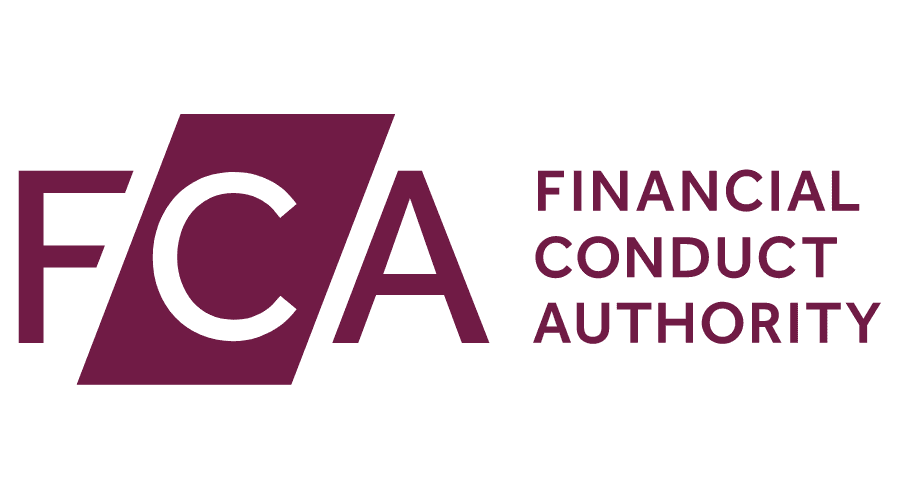New players looking to enter the ETF market in the UK are staring down the barrel of high legal costs and lengthy delays, an unintended consequence of Brexit that is stifling innovation and giving more established issuers a significant advantage.
While all eyes have been on public health and geopolitics, the clock has been running down on Brexit contingency plans. The ETF industry now faces the prospect of a two-year regulatory gap that could stonewall new issuers trying to enter the UK.
This series of events started before the UK officially left the EU, when the Financial Conduct Authority (FCA) created the Temporary Permissions Regime (TPR) and Temporary Marketing Permissions Regime (TMPR) to allow financial services firms based in the European Economic Area (EEA) to continue trading and marketing their products in the UK.
In over-simplistic terms, this meant ETF issuers were able to register their EEA-based platforms, for instance Irish Collective Asset-management Vehicles (ICAV), under the TPR before the withdrawal date in 2020.
Once they received a ‘landing slot’ from the FCA, they were able to continue passporting existing and future sub-funds from these recognised platforms into the UK for a maximum of three years from the end of the ‘Transition Period’ in March 2022.
Fortunately, most incumbents were able to get their fund platforms – or ‘umbrellas’ – into the TPR, meaning they can enjoy the same seamless access of UCITS until the Overseas Funds Regime (OFR) comes in.
ETF issuers use platforms as vehicles to domicile their strategies, perform accounting functions and from there, market to different countries.
Passed by the UK parliament, the OFR will establish a mechanism for other fund regimes to be given equivalence when marketing into the UK. While the OFR will give the FCA more discretion to approve or deny fund applications than it did under UCITS, it is clear the industry is pushing for this process to be as frictionless as possible, Peter Capper, fund and investment risk specialist at the Investment Association (IA), told ETF Stream.
Unfortunately, there is a gap in contingency planning, with a rift between three key dates. While the cut-off for entering the TPR was 31 December 2020, Capper said the OFR is not yet available – and might not be until next year or the start of 2024 in a “worst-case scenario”.
For now, non-TPR platforms and funds from the EEA are still treated like a UCITS fund in the UK but this will no longer be the case once the FCA’s transitional period falls away at the end of March.
After this cut-off date, there remains a lack of clarity over how UCITS funds – including ETFs – will be marketed in the UK, despite the UK Treasury’s wholesale markets review last year, according to Raza Naeem, counsel at international law firm Linklaters.
“There is a backlog which makes life a bit of a mess. We know certain obligations will go away and certain regimes will be introduced like the OFR but this has not happened yet,” Naeem continued. “We know the policy direction is going somewhere but the regulators have not been fast enough.
“The TPR will continue until the point that the OFR comes in but separately from that, conduct obligations and rules which state, for example, that you can treat an EU UCITS fund as a UCITS fund in the UK – whereas strictly speaking from a UK law perspective, they would now be alternative investment funds (AIF) – is all at a standstill right now.”
Woe for newcomers
The situation this leaves non-TPR funds in is far from ideal. For asset managers with existing platforms before the cut-off date, they could apply to wind down their UK activities under the Financial Services Contracts Regime (FSCR).
For new entrants to the European ETF market – launching their umbrellas after the TPR cut-off date – they need to apply to be recognised under section 272 of the Financial Services and Markets Act 2000 (FSMA) to market their products to the whole UK market, the FCA told ETF Stream in a comment.
The IA’s Capper said the process of getting recognised under section 272 involves legal costs “in the very high five figures” and can take between four to six months versus UCITS where costs are “minimal” and the timeframe is a matter of weeks.
“Section 272 of FSMA has been used in the past very rarely and the experiences of those who have tried to use it show that it is going to be a very time-consuming and very costly process,” Capper added.
“Potentially, it is almost a line-by-line analysis by the FCA to look at equivalence to see how the regime of the fund meets the UK requirements. If it takes some time for the OFR to come in, they might consider a simplified section 272 but I am not sure how possible that is going to be.”
The only positive is once an umbrella gains recognition, sub-funds must gain approval but do not have to go through the same recognition process each time. Capper noted even if simplification of section 272 were possible, he does not see it as a route many ETF issuers will want to take.
Naeem agreed the process is “very difficult” for those who failed to get into the TPR but said an alternative is to market exclusively to the high net worth portion of the retail market which he admitted was “quite annoying”.
“They cannot sell their funds to the mass retail market in the UK, they can only sell to specific sophisticated retail investors,” Naeem continued. “And even to fall within that, they must get comfortable that someone is checking that individuals meet high net worth conditions.”
Regrettably, this might put off newcomers to the ETF market, given many of the less established players make their money in less vanilla parts of the market – such as thematic ETFs – which appeal to retail investors.
Worth the effort?
Already, these barriers have hindered prospective ETF entrants to the UK market, even before the FCA’s transition period ends.
Philip Lovegrove, investment funds lawyer at Matheson, told ETF Stream: “There is a significant body of work involved in registering a new Irish umbrella for sale in the UK at the moment.
“This is not something that clients are keen to take on. Therefore, they are looking at alternatives to avoid this or are waiting for the situation to improve either through further regulatory changes or market practice evolving as a number of other funds go through the process and establish precedents.”
Manooj Mistry, who helped launch Europe’s first ETFs at Merrill Lynch, headed up DWS’s ETF division and is now COO at HANetf, said the process of marketing sub-funds from a new EEA platform to the UK is “long-winded and expensive” as “you are treated like a US or a Japanese fund”.
Mistry revealed this was one of the challenges abrdn has faced when looking to launch its ETF business in Europe “because it obviously would have had to set up a new platform”.
“As an ETF issuer, you just do not want to go through the hassle of doing this. You can spend your time and effort in a far more productive way.”
This is an interesting development given abrdn hired Chanchal Samadder to its sales team from Lyxor in March 2021 – a sign it was preparing to launch in Europe – only for Samadder to depart eight months later.
abrdn did not respond when approached for comment.
Elsewhere, a US ETF issuer – which did not want to be named – told ETF Stream it plans to launch products in Europe in the coming months and while the cost of passporting to the UK were “an order of magnitude higher” than other jurisdictions, it was more concerned about potential delays.
“The main issue is it will not be available to UK investors for six months,” the issuer complained. “It should not take six months to review something that is trading all over Europe.”
Having anticipated there would be some changes in accessing the UK via an ICAV, the US player said it had been willing to absorb some opportunity costs to enter the UK market with its flagship product. However, with its second UCITS ETF, it said it would opt for Germany as its primary listing then “look a little closer and see how it does” before committing to a UK listing.
Fundamental changes to the industry
This unaccommodating environment will likely have frustratingly predictable impacts on European ETFs – and funds – at large.
HANetf’s Mistry said barriers on newcomers will inevitably strengthen scaled-up incumbents.
“In many ways, as an existing ETF platform or provider you are happy because nobody else can enter the market. The path for new entrants is made more difficult,” he argued.
Furthermore, Mistry said BlackRock currently has “five or six” platforms from which it launches its iShares ETF range in Europe while DWS operated three platforms during his tenure.
Although there is no formal guidance on the number of umbrellas an issuer should have, policymakers such as the Central Bank of Ireland (CBI) will question an issuer’s ability to provide oversight of its ETFs if it operates a few hundred from the same vehicle.
“The other advantage is around flexibility,” Mistry continued. “If you have a legacy platform undergoing changes then you may not be able to use it to launch an ETF for a certain period. As a result, you have a second fund platform in order to be able to launch ETFs in the meantime.”
In turn, medium-sized ETF issuers in Europe may also be disadvantaged by limitations on launching new platforms which may affect their ability to scale.
Another impact could be a knock to the UK’s attractiveness as a destination to do business. The IA’s Capper quite rightly suggested those that struggle to access the London market will simply look elsewhere to list their products – a risk the IA has already highlighted to Her Majesty’s Treasury (HMT).
Supporting this, personnel from the incoming US ETF issuer suggested it had heard of no new platforms applying for UK recognition since equivalence was replaced by section 272.
The OFR waiting game
One route asset managers might take to avoid long waits for FCA recognition would be to set up a range of UK-domiciled mirror funds, however, HANetf’s Mistry cautioned by moving out of “centres of competence” in Ireland and Luxembourg, issuers would lose out on economies of scale – meaning they would end up passing on additional costs to end investors.
Another route might be to simply wait for the OFR to come in. On this, Capper warned the FCA is at an early stage of offering advice to HMT on what degree of UCITS equivalence to grant under the OFR.
“The FCA is considering it on a regional basis so anything that is UCITS and EU, however, it may do it on a country-by-country basis, in which case, they will look at Irish UCITS, Luxembourg UCITS and French UCITS, for example.
He added: “There is a possibility we might see something around the value assessment, which is a UK funds requirement, but at the moment the picture is fairly murky.”
Naeem advised: “If we were confident the OFR were coming in the next few months, I would say wait, however, two years is a long time, so in that situation I would tell them they can go ahead and put in place those restrictions [on who they can market to], based on how attractive they think the UK market would be.”
The FCA said the OFR is being led by HMT but it is working closely to provide technical advice.
It concluded: “We will be ready to provide assessments on the law and practice of fund regulation in other jurisdictions, as set out by the Financial Services Act 2021.”
Related articles








